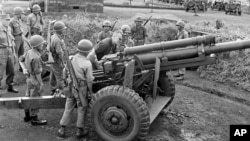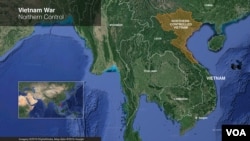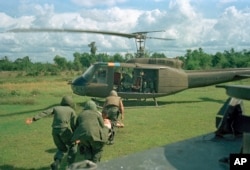In the fall of 1961, President John F. Kennedy signed off on sending more U.S. military aid to Vietnam — just a few hundred soldiers to train South Vietnamese soldiers.
Kennedy would not be the first or the last American president to confront the conundrum of the so-called "domino theory" — that the Soviet Union (and Communist China) were seeking to expand their influence in Southeast Asia, first in Vietnam and then, later, its neighbors.
President Dwight D. Eisenhower addressed the "domino" metaphor in a speech in 1954 as it related to U.S. policy in Vietnam — and wider concerns regarding Soviet expansion.
"Finally, you have broader considerations that might follow what you would call the "falling domino" principle. You have a row of dominoes set up, you knock over the first one, and what will happen to the last one is the certainty that it will go over very quickly. So you could have a beginning of a disintegration that would have the most profound influences."
From 1954 to 1975, four American presidents would have to contend with whether or not to deepen U.S. involvement in Vietnam's war over what turned out to be misguided fears of Soviet expansion.
By the time the United States withdrew in 1975, 2.5 million Americans had fought one the side of the South Vietnamese, who battled the Communist North.
58,000 American military personnel died in Vietnam.
Kennedy's decision 56 years ago Wednesday, the 16th of November 2016, ultimately was one of many, made over many years — culminating in a war that spawned widespread opposition and protests, deeply damaged the presidency of Lyndon B. Johnson and was deemed a costly and losing proposition for the United States.








